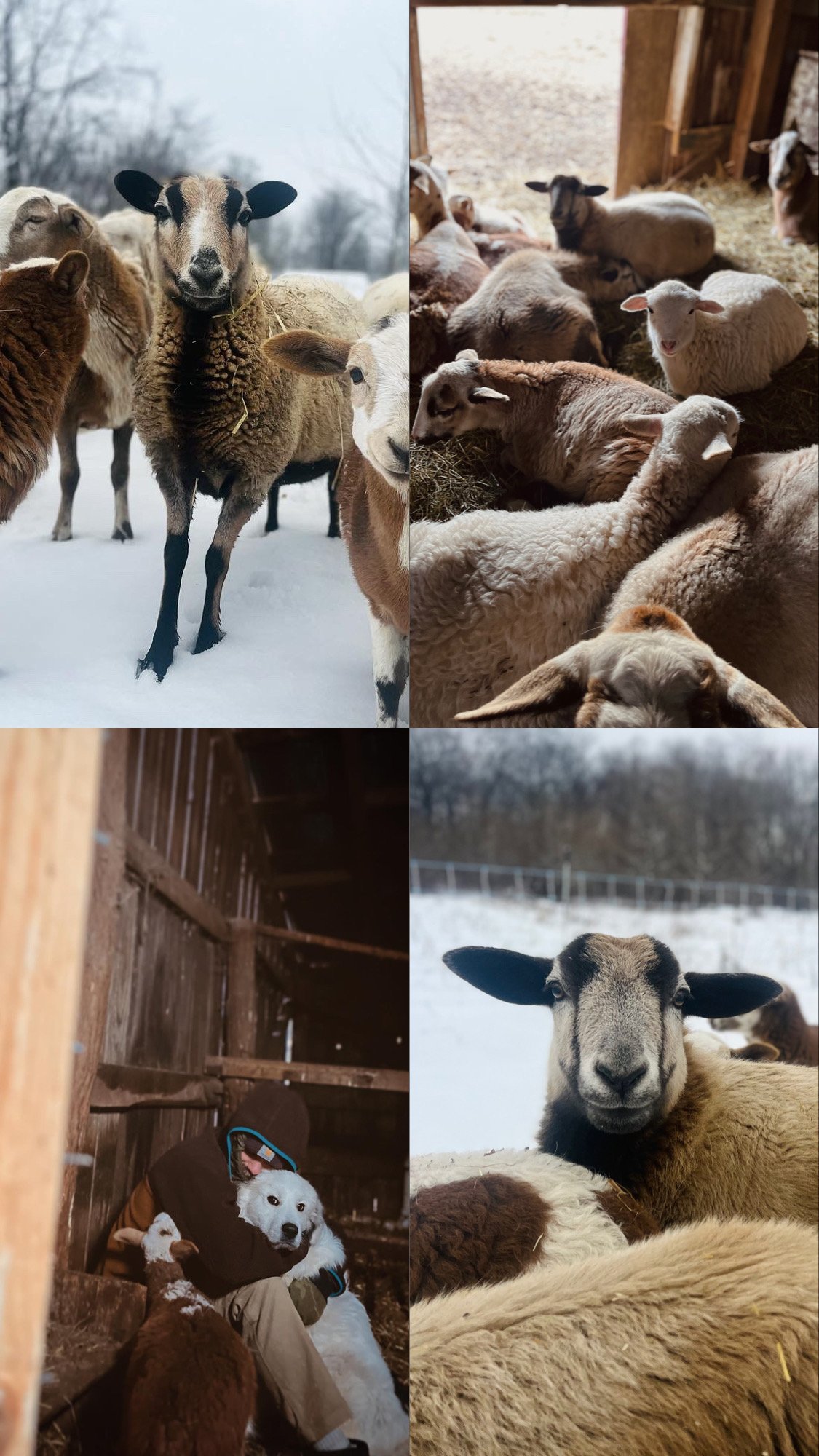A Not-So-Long Winter’s Nap
To begin this winter farm update, we’ll express first our great appreciation for this season’s new shareholders. Your intentions are admirable, your contribution is generous, and your support is absolutely essential. With your funding, we are able to realistically pursue a simple, more ideal traditional lifestyle, seek better ways to sustain our minds and bodies, and ultimately share what we experience, learn, and grow with this CSA community. We are proud to collaborate in this small ecosystem of primary and secondary consumers, with its efficient harmony and symbiosis. The shareholders and the farmers share a unique opportunity to exchange what is, we sincerely believe, tangibly natural, and objectively good.
So far, we’ve had a great many returning shareholders reinvest for 2023! Your renewed support represents much more than practical funding required to execute the upcoming crop plan. Intangibly and perhaps more importantly, your annual participation moves and motivates us. On our own behalf, we can’t always reliably summon the adequate confidence and enthusiasm necessary to pursue and persevere through such a project as it is not untrue that being tied to a piece of farmland, with responsibilities steadily accumulating across it, can be intimidating and isolating. While we assume that the we all appreciate the value of “knowing thy farmer,” we think it’s equally important that we don’t undervalue what it means for the farmer to “know thy patron.” The existence and noble support of this community simply cannot be over-appreciated and again, we thank you.
Revisiting “Why”
Unsurprisingly, the pace is slower at the farm during wintertime. We don’t take the winter sabbath for granted. Literally and figuratively, our world and each of its particles moves slower, allowing greater bandwidth and space for reflection and imagination. We have access to invaluable time with which we can revisit the meditation about who, where, how, and most importantly, why we have decided to live this way.
This season, we’ll strive to simplify the “where” regarding both the inputs and outputs of our farm and gardens. We’ve taken a minimalist approach to marketing and distributing our outputs this season to avoid uncertainty, inefficiency, and waste by offering only the home delivery CSA option. It doesn’t get much simpler, fresher, or more direct in distribution: Often times on delivery day, fresh whole foods are harvested by the growers themselves and loaded fresh into the growers’ vehicle to be delivered by the growers directly to the shareholding community. It’s not an exaggeration to claim that maybe the only way to get fresh food more efficiently is by foraging with your own hands and feet or harvesting from your own backyard garden!
We seriously consider from “where” our garden inputs travel. We take great care and pride in, when necessary, sourcing our garden inputs locally. As important as it is for us to efficiently deliver whole foods directly from garden to table, it’s equally important that we generate and acquire organic inputs as close to home as possible. Our “where” becomes somewhat interchangeable with our “how” as, in collaboration with our organic and human scale farming practices, our insistence on locally-sourced soil amendments encourages us to produce in the most ethical, responsible, regenerative way we know.
Off-farm compost comes from Price Farms Organics in Delaware, Ohio, where they combine animal bedding and manure from the Columbus Zoo, local food waste, leaf hummus, and recycled coffee grounds into a nutrient-rich compost blend that we incorporate into our garden bed preparation. Our seedlings and microgreens are grown with Tilth potting soil from Cleveland. It’s an organic soil mix with nutrients from local food waste compost. Ohio Earth Food organic granular fertilizer, from David’s hometown of Hartville, is made up of composted chicken manure and other organic poultry industry bi-products. We incorporate this slow release fertilizer to feed hungrier crops and provide a deliberate micro nutrient boost. Chemical pesticides and synthetic fertilizers derived from fossil fuels are never used on the farm.
The obvious or basic “who” of this operation is the consumer, you and your family, to whom we’ve expressed our sincere gratitude in this update’s opening paragraphs. But to be honest and transparent, our purest motivation really is not to feed the world, or to promote a profitable commercial business/brand. Our “why” has always been about self-reliance- to remember how to feed ourselves, to sever our demand from the collective need, to detach with us as much weight off of the communal supply chain as is realistic, to prove that it’s possible. With all due respect to the necessity and miracle of mass conventional food production and marketing and our admittedly lingering (though dwindling) reliance upon it, we simply want to thin out the grocery store produce section. As we struggle to embody the change we’d like to see in our world, while we romanticize about potential progressive ripples radiating omnidirectionally from our small country farm and each of your dinner tables, we are predominantly motivated to provide optimal, simple nutrition for individual families including our own.
We hope our new and old friends have a great February. Spring will be here before we know it! Feel free to reach out with any questions, comments, or ideas.
Erin & David
P.S. We’ve reached the halfway point of our 5th lambing season by welcoming our newest little ram lamb Norman! He was born Thursday evening just after sundown. His mother, Peggy, did a fantastic job delivering and nursing him in the frigid cold. Be sure to follow along on social media to keep up with this little boy and his cousins. They grow up fast!




